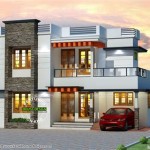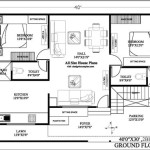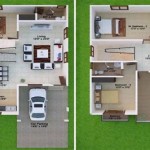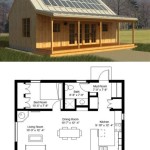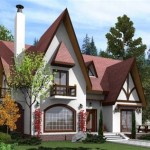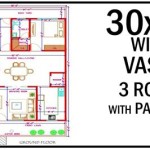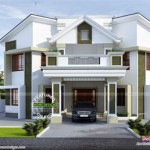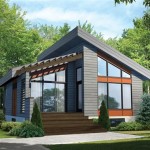Weird Home Floor Plans
Home floor plans are blueprints for comfortable living, dictating the flow and functionality of a dwelling. While most adhere to conventional design principles, some deviate dramatically, resulting in unusual and occasionally impractical layouts. These "weird" floor plans can stem from various factors, including architectural experimentation, challenging lot sizes, historical quirks, or simply unconventional homeowner preferences.
One common category of weird floor plans involves awkward room placement. Bedrooms situated adjacent to kitchens or bathrooms opening directly into living rooms can disrupt privacy and create noise issues. These layouts often arise from renovations that prioritize maximizing space without fully considering the impact on daily life. Poorly placed staircases can also contribute to a strange flow, cutting off access to certain areas or dominating valuable living space.
Another factor contributing to unusual floor plans is the incorporation of unnecessary hallways or corridors. While hallways serve a purpose in connecting various rooms, excessive or inefficiently designed hallways waste square footage and can make a house feel labyrinthine. This issue often occurs in older homes that have undergone multiple additions or renovations without a cohesive overall plan.
Split-level homes, popular in the mid-20th century, represent a specific type of floor plan that can be perceived as unusual. These homes feature staggered floor levels, creating a multi-tiered layout. While this design can create distinct zones for different activities, it can also lead to disjointed living spaces and numerous short flights of stairs, posing challenges for accessibility and furniture placement.
Open-concept layouts, while generally desirable for their spaciousness and flow, can also become weird if not carefully planned. A completely open floor plan with no defined zones for different activities can feel chaotic and lack privacy. The absence of walls can also make it difficult to control noise and temperature, and can present challenges for furniture arrangement and creating a sense of intimacy.
Historical architectural trends have also contributed to some truly bizarre floor plans. Victorian-era homes, for example, are sometimes characterized by oddly shaped rooms, turrets, and hidden passageways. These features, while charming to some, can create impractical living spaces and make furniture placement a puzzle. Similarly, some older homes feature small, compartmentalized rooms that lack functionality in modern living.
Unusual lot shapes and sizes can also necessitate unconventional floor plans. Homes built on narrow or irregularly shaped lots may have to incorporate unusual angles, narrow rooms, or multiple levels to maximize the available space. This can result in floor plans that are challenging to furnish and navigate.
The rise of unconventional architectural styles has also contributed to the emergence of weird floor plans. Modern and contemporary homes often feature unique shapes, angles, and open spaces that can defy traditional design principles. While these designs can be visually striking and innovative, they can also result in impractical layouts if not carefully considered.
Furthermore, some homeowners simply prefer unconventional layouts. They may prioritize features like a central courtyard, a rooftop garden, or an indoor swimming pool, which can necessitate unusual room placements and circulation patterns. These unique preferences can lead to highly personalized floor plans that may not appeal to everyone.
The internet is a treasure trove of examples of weird floor plans, showcasing everything from bathrooms located in kitchens to bedrooms accessible only through other bedrooms. These examples highlight the wide range of unconventional designs that exist and serve as a reminder that functionality should always be a primary consideration in home design.
Analyzing these unusual layouts reveals common themes: poor flow, wasted space, and awkward room adjacencies. While some unconventional floor plans may offer unique aesthetic or functional advantages, many arise from poor planning or a failure to consider the practicalities of daily living.
Ultimately, the "weirdness" of a floor plan is subjective. What one person finds unusual, another may find charming or even innovative. However, prioritizing functionality and flow is crucial in creating a comfortable and livable home, regardless of how unconventional the design may be.
Considering the long-term implications of a floor plan is essential. Resale value can be significantly impacted by unusual layouts, as potential buyers may struggle to envision themselves living in a space that doesn't conform to conventional expectations. Therefore, while embracing unique design choices can be rewarding, it is important to weigh the potential drawbacks carefully.

10 Houses With Weird Wonderful And Unusual Floor Plans

Global Property The Family Home With A Floor Plan That S Missing Hallway

10 Houses With Weird Wonderful And Unusual Floor Plans

10 Houses With Weird Wonderful And Unusual Floor Plans

10 Houses With Weird Wonderful And Unusual Floor Plans

10 Houses With Weird Wonderful And Unusual Floor Plans

10 Houses With Weird Wonderful And Unusual Floor Plans
Plan 051h 0003 The House

Southwestern Home Plan With Unusual Shape 46046hc Architectural Designs House Plans

Related Image House Plans How To Plan Adobe

